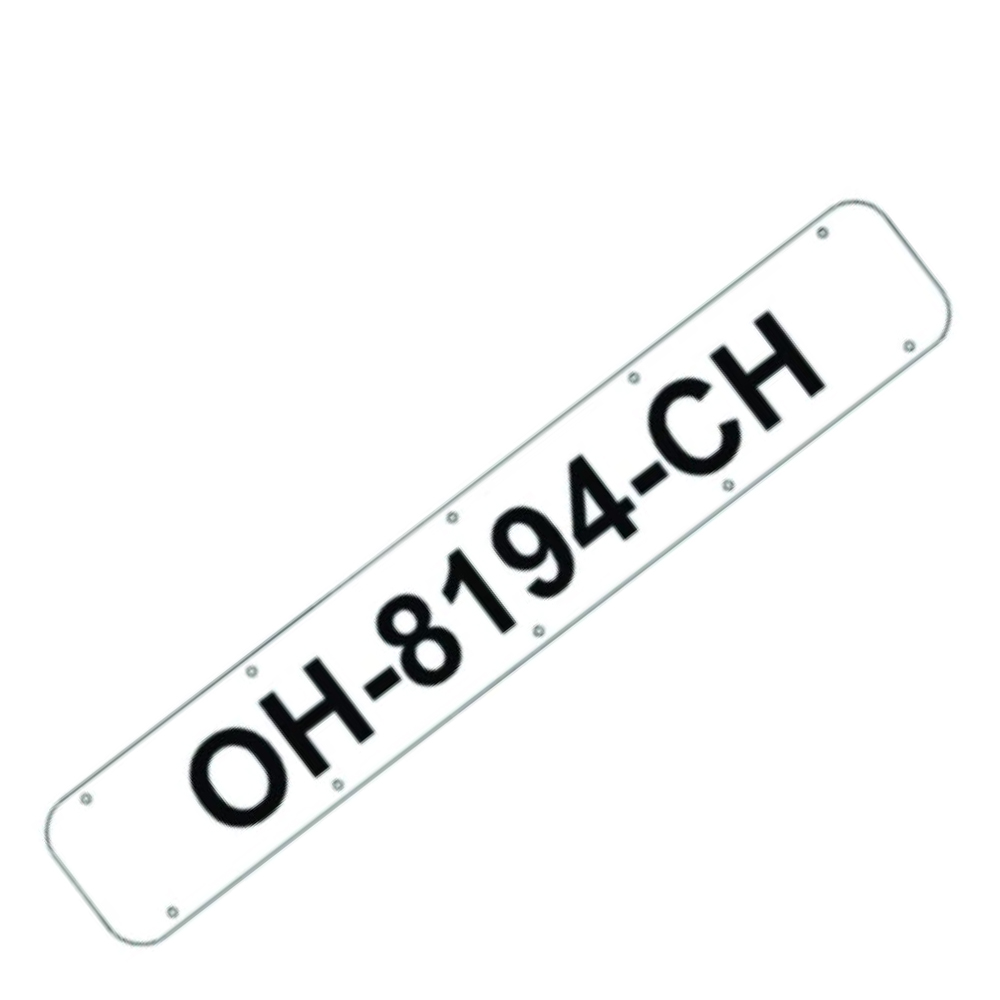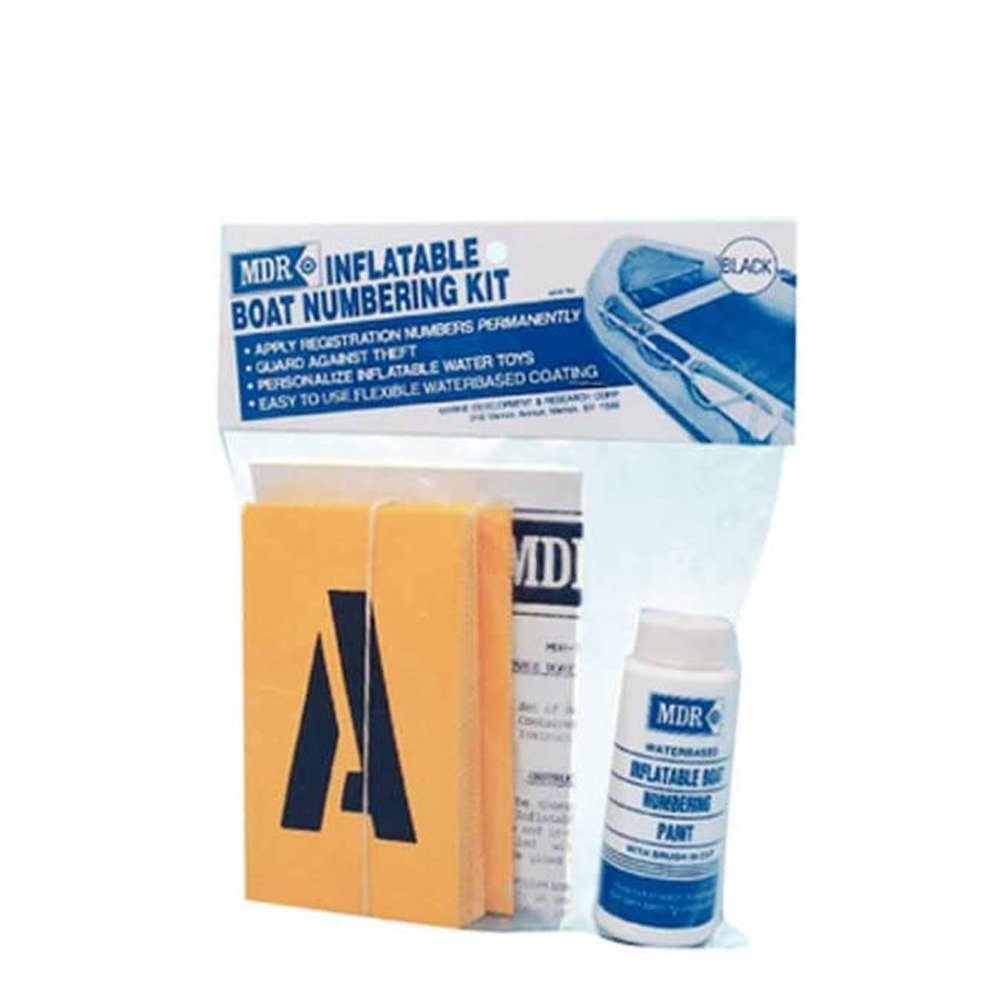Labels and Letters


Letters, Labels and Signs
How to Display Boat Name and Registration Number
So you're the proud new owner of a boat or perhaps pulling the tarp off that forgotten boat to return it to it's rightful place - on the water. Either case, congratulations. The next step involves a commonly asked question around Jamestown Distributors: how must I display my boat's name and registration? The answer is quite simple, but depends on who you ask, the state or the federal government. For state boat registry, numbers are used, akin to an automobile license plate, to identify any vessel. Harbormaster, police, coast guard and safety inspectors check for this. An alternative to state registration is the national registry for federally documented vessels. This primer should clarify the display requirements of either option to quickly clear you over this final hurdle to the water.
State Registered Vessels
Every motorized vessel of United States ownership used in US waters is required to either register within the state, or else be federally documented through the USCG. For the average pleasure boat, a boat not likely to visit foreign ports, it is a simple process to register within the state of principal use. While rules for vessel registration differ from state to state, in general, once you register the boat with the state you are issued a registration ID number. This state registration ID must be displayed permanently on the boat as follows:
2 letters for the state followed by a space, then 4 numbers, another space, concluding with 2 more letters, all of which is read left to right.
A safety inspector, whether they be Coast Guard, state law enforcement or vessel examiners, are required to evaluate registration displays during a routine safety inspection. The safety inspector will look for the following things:
- Numbers must be painted on or permanently attached to the forward half of a vessel.
- The letters must be in plain vertical block characters of no less than 3 inches high.
- The color must contrast the background and be clearly legible from 100 feet away. (multicolor not allowed)
- They must have spaces or hyphens that are equal to the width of a letter to clearly separate the letter and number groupings.
- These must be the only numbers displayed on the forward half of the vessel (Except a validation sticker required in most states. Validation stickers must be displayed within 6 inches of the registration numbers.)
The easiest way to comply with state registration displays on gelcoat finishes is to adhere vinyl letters and numbers high on the port and starboard bow. Letters should be a minimum of 3 inches high in vertical block characters. For proper alignment on the first try, pencil a straight edge guide line on the hull. Another alternative, particularly for painted finishes, is to trace with stencils and then paint the letters and numbers.
For some atypical vessels the following conditions apply:
- Vessels used by a manufacturer or dealer for testing or demonstration may display the number on a temporary plate firmly attached to each side of the forward half of the vessel.
- On vessels so configured that a number on the hull or superstructure would not be easily visible, the number must be painted on or attached to a plate that is permanently attached to the forward half of the vessel so that the number is visible from each side of the vessel.
- Inflatable craft may have the number firmly attached to the forward half of the vessel by a method which meets all other criteria.
Exceptions to Registration Display Requirements
There are a few exceptions to requirements for displaying registration numbers.
"Every undocumented vessel equipped with propulsion machinery of any type used on waters subject to the jurisdiction of the United States and on the high seas beyond the territorial seas, and owned in the United States shall be numbered, EXCEPT:
- "Foreign vessels temporarily using waters subject to U.S. jurisdiction;
- "Military or public vessels of the United States, excluding recreational type public vessels;
- "A vessel whose owner is a state or subdivision thereof, which is used principally for governmental purposes, and which is clearly identifiable as such;
- "Ship's lifeboats, when used as such; and
- "A vessel which has or is required to have a valid marine document as a vessel of the United States. Vessels exempted from numbering by regulation as listed below: (States do not have to exempt these vessels, but are given the authority to do so if they desire).
- "A vessel that is used exclusively for racing;
- "A vessel equipped with propulsion machinery of less than 10 horsepower that is used as a tender for direct transportation between a documented vessel and the shore, and for no other purpose, may display the number of that numbered vessel followed by the suffix "1" in the manner prescribed by regulation.
- "Sailboats without auxiliary machinery power are exempt from the numbering requirement although states may require them to be numbered."
from the Vessel Safety Check Manual issued by the United States Coast Guard.
For further information on display of vessel registration numbers see the following links:
Boat Name and Hailing Port Display
For most states, the boat name and hailing port display is not required. It is required of documented vessels, and those requirements are an excellent guideline for displaying boat name and hailing port on any vessel. Read on for more info in displaying the boat name.
Documented Vessels
Some vessels register with the Coast Guard instead of state. This is referred to as federally documented vessels. This form of national registry is one of the oldest forms of government in the US, dating back to the 11th Act of the First Congress. Federal documentation benefits US flag vessels engaged in commerce outside US waters. This is required of US owned vessels over 5 net tons engaged in commerce within the jurisdiction of US. Any boat, wholly owned by a US citizen and over 5 net tons, may also opt for this national form of documentation. It's advantage over state registry is clear identification of nationality when travelling abroad. Documentation can also affect financing options available to that boat. The display requirements of such vessels is entirely different. In short, the official number must be permanently marked in the "interior" and boat name and hailing port must be clearly marked outside.
"WHAT ARE THE VESSEL NAME AND HAILING PORT MARKING REQUIREMENTS?
"Documented vessels do not display their official numbers on the outside of the hull, but are identified by the name and hailing port. The application for documentation must include a name for the vessel composed of letters of the Latin alphabet or Arabic or Roman numerals and may not exceed 33 characters. The name may not be identical, actually or phonetically, to any word or words used to solicit assistance at sea; may not contain or be phonetically identical to obscene, indecent, or profane language, or to racial or ethnic epithets. Once established, a vessel's name may not be changed without application, fees, and the consent of the Director, National Vessel Documentation Center. There is no rule against duplication of names for documented vessels, so hailing ports are helpful in identifying vessels.
"HOW DO I MARK MY VESSEL?
"The official number assigned to documented vessels, preceded of the abbreviation "NO." must be marked in block-type Arabic numerals at least three inches high on some clearly visible interior structural part of the hull. The number must be permanently affixed so that alteration, removal, or replacement would be obvious and cause some scarring or damage to the surrounding hull area.
"The name and hailing port of a recreational vessel must be marked together on some clearly visible exterior part of the hull. The vessel name of a commercial vessel must also be marked on the port and starboard bow and the vessel name and the hailing port must also be marked on the stern. All markings may be made by any means and materials that result in durable markings and must be at least four inches in height, made in clearly legible letters of the Latin alphabet or Arabic or Roman numerals. The "hailing port" must include both a place and a State, Territory, or possession of in the United States. The state may be abbreviated."
-from the National Vessel Documentation Center FAQ
For further information on federally documented vessels visit the National Vessel Documentation Center
